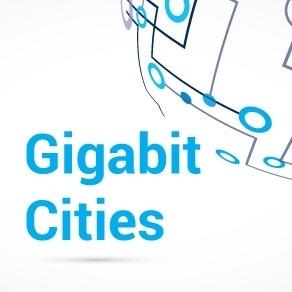At the Gigabit Cities Live! Event in Atlanta, Eric Small of AT&T GigaPower talks about what happens once a Gigabit broadband network is built and notes the importance of wireless in the gigabit trend.
May 13, 2015

ATLANTA, Ga. -- Gigabit Cities Live! 2015 -- Building a Gigabit broadband network is the critical first phase in developing an "innovation-fuelled digital economy," but it's just the start and it's not the most challenging step towards that digital nirvana.
So said Eric Small, vice president of AT&T Gigapower , during his keynote presentation here Wednesday morning. Small is the go-to guy for AT&T Inc. (NYSE: T)'s Gigabit broadband strategy, which is focused currently on 100 cities in 25 markets. (See Gigabit Cities Live Hits Atlanta , AT&T GigaPower Reaches Atlanta Area and AT&T to FCC: We Haven't Killed Broadband Rollout.)
What will challenge everyone in the broadband services ecosystem is Phase II, which Small calls the "enablement phase." Once the physical infrastructure is in place, a Gigabit city needs a number of systems and platforms -- data analytics, cloud, cybersecurity, artificial intelligence, Internet of Things (IoT) and so on -- that run atop the network to make the development of new services possible.
These, plus municipal data sets, are the building blocks needed to truly enable the digital economy and to help enable the required ecosystem.
Figure 1:  AT&T GigaPower's Eric Small talks "Phase II" while Light Reading's Alan Breznick, compere for the start of the day, takes notes.
AT&T GigaPower's Eric Small talks "Phase II" while Light Reading's Alan Breznick, compere for the start of the day, takes notes.
That in itself is still not enough, though. The most challenging and critical step is getting all of the different parties -- network operators, local government, business leaders and more -- to work together to a shared plan with the same end goals. "This is the most challenging [part] because of the collaboration, leadership and risk-taking that is required," noted Small.
Add to that the program management skills needed, the government structures to be taken into account plus many other factors and a picture starts to build of just how challenging it is going to be to get everything right so that the full benefits of a Gigabit city development can be realized.
The rollout of Gigabit broadband access networks is spreading. Find out what's happening where in our dedicated Gigabit Cities content channel here on Light Reading.
Of course, Small wasn't saying that building the network is easy, or that getting business and residential users to engage with and use the broadband assets and associated platforms is a given. But if the needs of a city are properly articulated, an open innovation platform (with open APIs) is developed, the right partnerships are forged to spark new ideas and there are business plans (or positive goals) to back those up, then there is a real opportunity to "magnify" the possibilities of a Gigabit network infrastructure.
Small, understandably given AT&T's portfolio of services, was keen to note that wireless and cloud/data center assets play a key role in that infrastructure – it's not all about high-speed fixed broadband connectivity. "The catalyst for transformation is the modern digital infrastructure... and this must include wireless, both WiFi and LTE, for community applications and cloud capabilities to enable truly always-on applications."
— Ray Le Maistre, 

 , Editor-in-Chief, Light Reading
, Editor-in-Chief, Light Reading
You May Also Like









